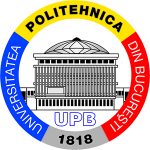As smart and adaptive technologies have become more and more integrated into our personal lives, assistive robots are expected to become true partners and companions of the human users they serve. While general purpose robots are not yet ready, we do however see emerging technologies that can help people in the near future. One of the fundamental functionalities for accepting a socially assistive robot is its communication capability. Modern domotics also implies natural interaction through natural language commands.
For the Romanian language, voice interaction is still a great challenge, with some encouraging but limited experiments. The communication context which is of interest for this project is that of a situational dialogue, which implies reference to the immediate reality. One of the most effective methodologies for designing the situational communication component in natural language is based on micro-world scenarios. The great advantage of this approach is the ability to predict the intentions of the human partner, the most likely content of a request or order, and to formulate clever requests for clarification under conditions of insufficient knowledge, in order to process the transmitted message.




